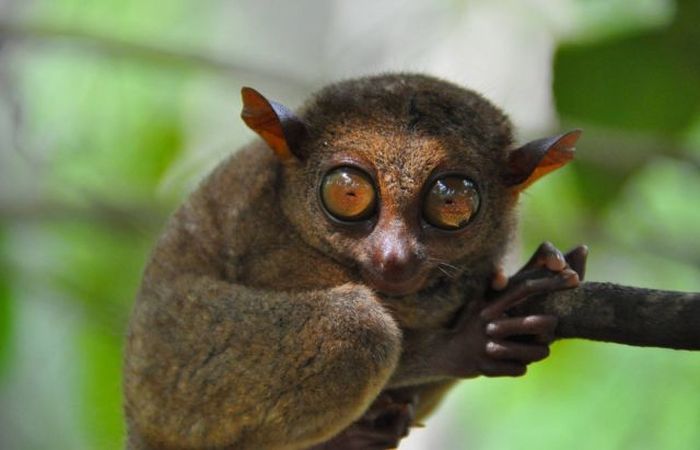|
|
Philippine Tarsier
|
Tarsiers are small animals with enormous eyes; each eyeball is approximately 16 mm in diameter and is as large as its entire brain. Tarsiers also have very long hind limbs, due mostly to the extremely elongated tarsus bones of the feet, from which the animals get their name. The head and body range from 10 to 15 cm in length, but the hind limbs are about twice this long (including the feet), and they also have a slender tail from 20 to 25 cm long. Their fingers are also elongated, with the third finger being about the same length as the upper arm. Most of the digits have nails, but the second and third toes of the hind feet bear claws instead, which are used for grooming. Tarsiers have very soft, velvety fur, which is generally buff, beige, or ochre in color.
Unlike other prosimians, tarsiers lack any toothcomb, and their dental formula is also unique: 2.1.3.3/1.1.3.3.
Unlike many nocturnal vertebrates, tarsiers lack a light-reflecting area (tapetum lucidum) of the eye and have a fovea.
The tarsier's brain is different from other primates in terms of the arrangement of the connections between the two eyes and the lateral geniculate nucleus, which is the main region of the thalamus that receives visual information. The sequence of cellular layers receiving information from the ipsilateral (same side of the head) and contralateral (opposite side of the head) eyes in the lateral geniculate nucleus distinguishes tarsiers from lemurs, lorises, and monkeys, which are all similar in this respect. Some neuroscientists suggested that "this apparent difference distinguishes tarsiers from all other primates, reinforcing the view that they arose in an early, independent line of primate evolution."
|
|









